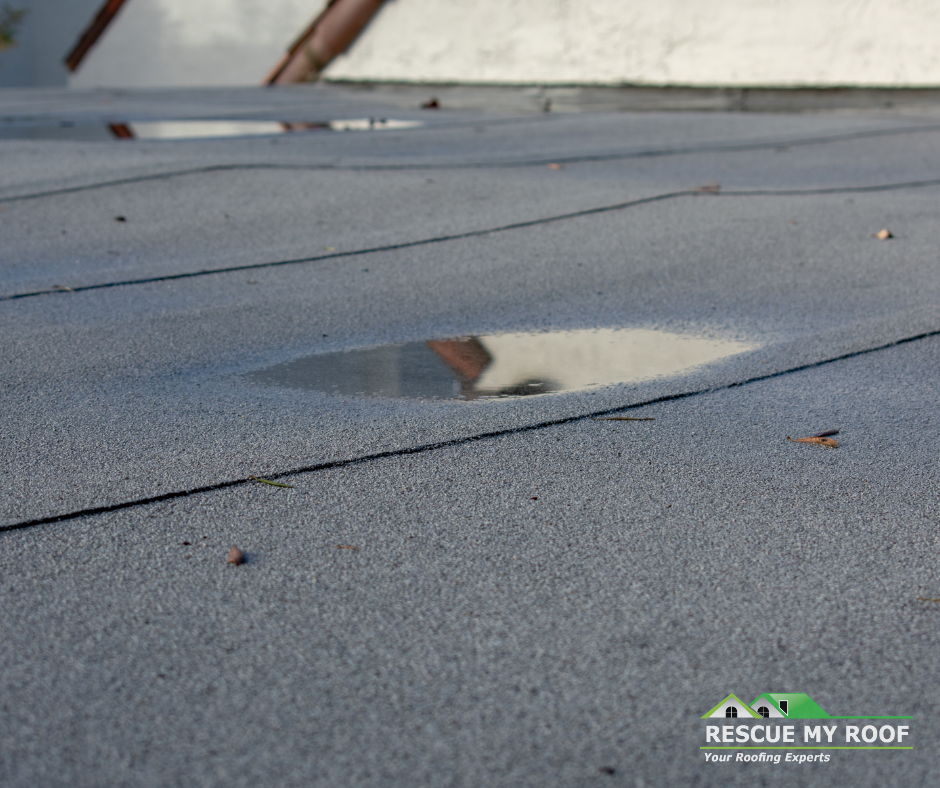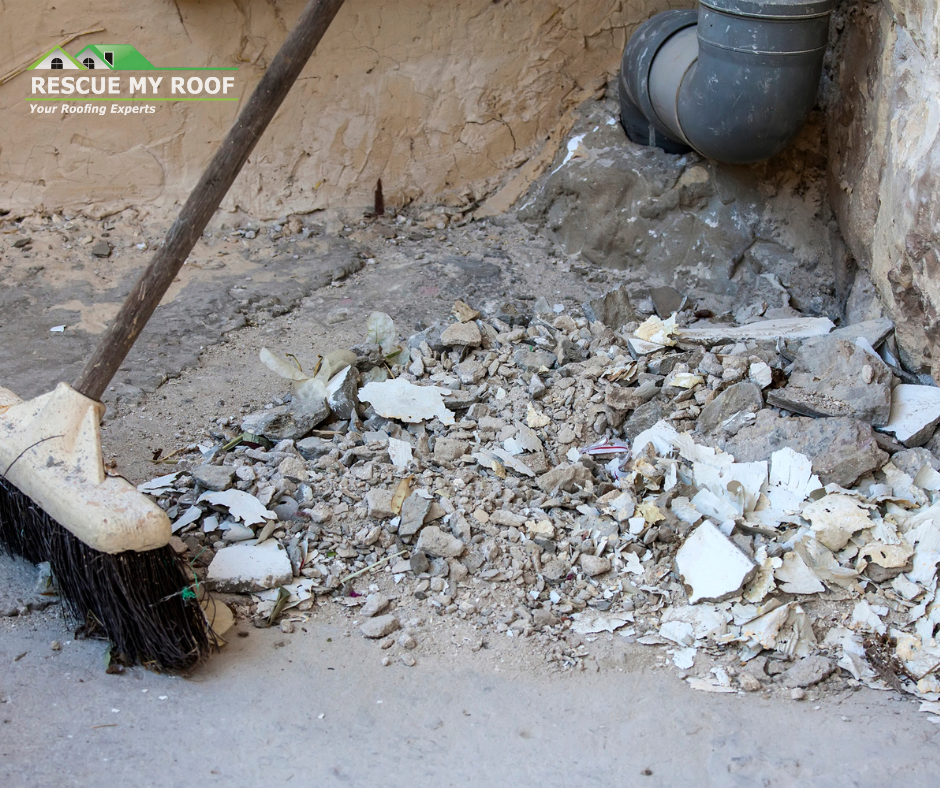How Often Should You Clean Your Flat Roof? A Homeowner’s Guide
Flat roofs are a popular choice for many homeowners and businesses because of their sleek, modern look and space-efficient design. However, maintaining a flat roof requires regular care and cleaning to ensure it remains in good condition.
Unlike sloped roofs, flat roofs are more susceptible to debris buildup, water pooling, and damage from weather, which makes cleaning essential to avoid costly repairs and extend the roof’s lifespan.
But never fear – Rescue My Roof is here. With over a decade of experience, we’re here to help you maximize your flat roof’s lifespan.
In this guide, we’ll explore the factors that affect cleaning frequency, signs that your flat roof needs attention, and tips for keeping your flat roof in top shape year-round. Ultimately, you’ll be able to clean and maintain your roof like a pro.
Why Is Cleaning a Flat Roof Important?
Flat roofs differ from sloped roofs in one key aspect: they don’t have the natural slope to allow rain, snow, and debris to easily slide off. This means they are more prone to:
- Debris Buildup: Leaves, branches, dirt, and other debris can accumulate on the roof, potentially clogging drainage systems and leading to water pooling.
- Standing Water: Water can collect on the surface of a flat roof, which can cause leaks, mold growth, and even structural damage over time if not properly drained.
- Algae and Moss Growth: The accumulation of moisture can encourage the growth of moss, algae, and other vegetation, which can damage the roof membrane and lead to deterioration.
- Damage from UV Rays: Regular cleaning allows you to inspect the roof for signs of wear from the sun’s rays, which can cause the roofing material to crack or degrade over time.
Regular cleaning helps prevent these issues, keeps the drainage system functioning properly, and allows you to spot potential problems before they become costly repairs.
How Often Should You Clean Your Flat Roof?
The frequency with which you should clean your flat roof depends on a variety of factors, including the climate, surrounding environment, and the specific materials used in your roof. However, as a general rule, flat roofs should be cleaned twice a year—once in the spring and once in the fall.
Here’s why:
- Spring Cleaning: Winter weather can cause a buildup of debris, and snowmelt can leave standing water on your roof. Spring is an ideal time to clear away debris, check for any damage caused by snow or ice, and prepare your roof for the warmer months ahead.
- Fall Cleaning: Fall is another critical time for roof cleaning, as leaves and other debris tend to accumulate during this season. Cleaning your roof in the fall ensures that your drainage system is free of obstructions and that your roof is prepared to handle the colder, wetter months.
However, some factors may require you to clean your roof more frequently than twice a year:
1. Nearby Trees
If your home or building is surrounded by trees, especially those that shed leaves and branches, you may need to clean your flat roof more often. Debris from trees can quickly accumulate on a flat roof, clogging gutters and drainage systems and leading to water buildup. In this case, you may want to clean your roof every three to four months to ensure it stays clear.
2. Weather Conditions

Areas that experience heavy rain, snow, or wind can cause debris to build up more quickly or damage the roofing material. If you live in an area with extreme weather, you may need to clean your flat roof more frequently to remove water, ice, or debris. In storm-prone areas, inspect and clean the roof after major storms to prevent standing water or damage.
3. Roof Material
The material used on your flat roof can also influence how often it should be cleaned. Some roofing materials, such as gravel or tar, may trap debris more easily and require more frequent cleanings, while smoother materials like rubber or PVC membranes are easier to maintain.
4. Roof Usage
If your flat roof is used as a patio, garden, or any other outdoor living space, it may accumulate more dirt and debris from regular use. In this case, you should plan to clean the roof at least every few months to ensure that dirt, foot traffic, and debris don’t compromise the roof’s integrity.
Signs Your Flat Roof Needs Cleaning
Even if you’ve cleaned your roof recently, certain signs may indicate that it’s time for another cleaning. Here are some warning signs that your flat roof needs attention:

- Water Pooling: Standing water is one of the most common signs that your flat roof needs cleaning. If you notice water pooling on your roof after rain, it’s a sign that the drainage system may be blocked by debris.
- Debris Buildup: If you can see leaves, branches, or other debris collecting on your roof, it’s time for a cleaning. Allowing debris to accumulate can lead to clogged drains and water damage.
- Vegetation Growth: If you notice moss, algae, or weeds growing on your roof, it’s a sign that moisture has accumulated and is not draining properly.
- Visible Damage: Cracks, blisters, or other visible damage to the roof surface could indicate that the roofing material is deteriorating, and regular cleaning can help you catch these issues early.
Flat Roof Cleaning Tips
Proper flat roof cleaning involves more than just sweeping away debris. Follow these tips to keep your roof clean and in good condition:

- Use a Broom or Blower: Use a soft-bristle broom or a leaf blower to gently remove debris from the roof. Avoid using sharp tools that could damage the roofing material.
- Check the Drains and Gutters: Make sure all drains and gutters are clear of leaves, dirt, and debris. Blocked drains can lead to standing water, which can cause leaks and structural damage.
- Inspect for Damage: While cleaning, take the time to inspect the roof for any signs of wear and tear, such as cracks, blisters, or pooling water. Early detection can prevent costly repairs later on.
- Safety First: Always prioritize safety when cleaning your roof. If your roof is difficult to access or you’re unsure about the process, consider hiring a professional roofing contractor to handle the cleaning.
Professional Roof Cleaning Services
While DIY roof cleaning can be an effective way to maintain your flat roof, it’s not always practical or safe, especially for larger buildings or multi-story homes. Hiring a professional roof cleaning service ensures that your roof is cleaned thoroughly and safely, with no risk of damage to the roofing material.
Professional roof cleaners have the right equipment and expertise to clear debris, check for potential issues, and make any necessary repairs, helping you extend the life of your roof and protect your home or building from water damage.
Cleaning Your Flat Roof Regularly to Protect Your Investment
Cleaning your flat roof regularly is essential for maintaining its performance and extending its lifespan. By scheduling cleanings at least twice a year—more frequently if needed—you can prevent water damage, debris buildup, and costly repairs down the line.
Whether you handle the cleaning yourself or hire a professional, keeping your flat roof in good condition is one of the best ways to protect your investment and ensure your home or building stays dry and safe for years to come.
Learn more with “How to Properly Clean A Flat Roof: A Step-by-Step Guide” and “Can I Pressure Wash A Flat Roof? (Best Practices).”
Is your flat roof old and leaking? Allow Rescue My Roof to help. Contact us today to get a free estimate.


